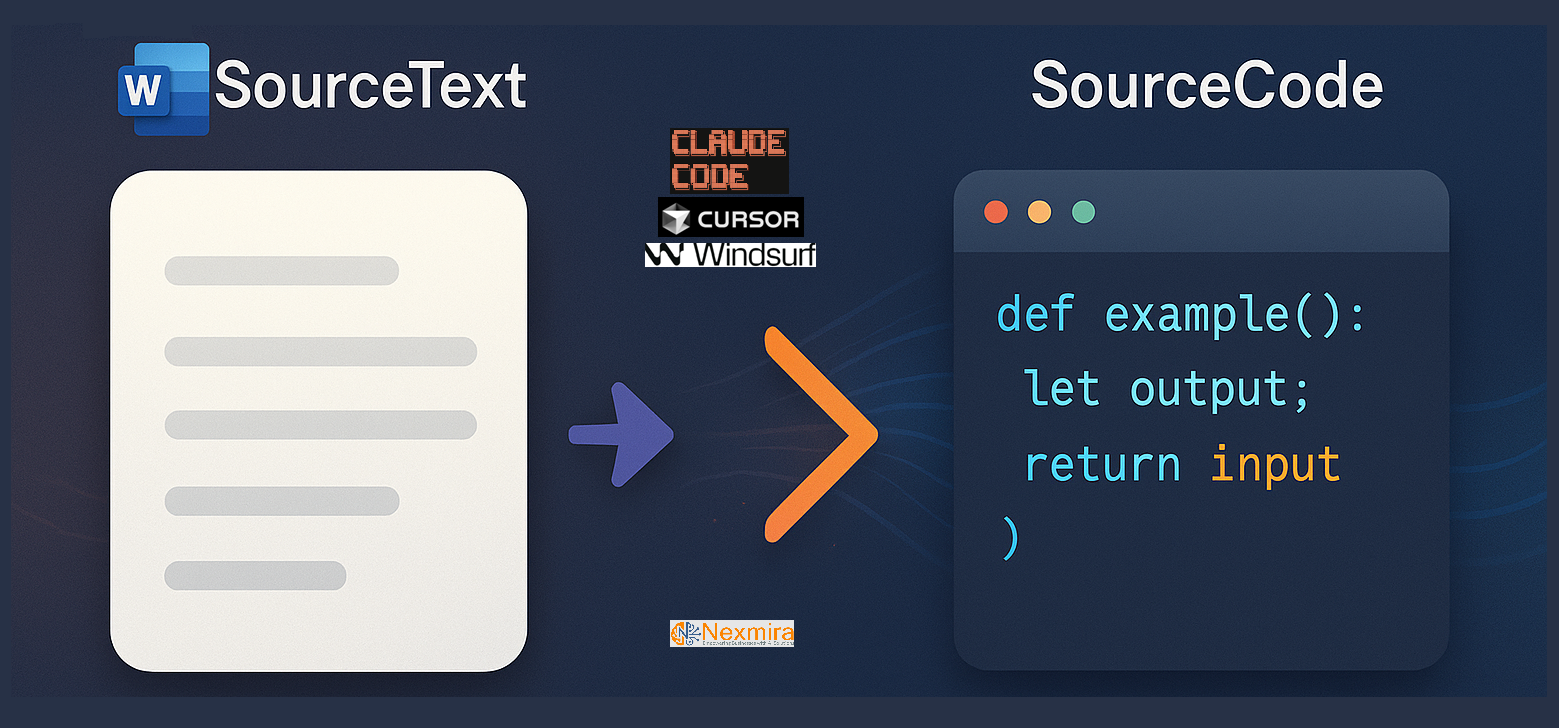Introduction
The software development landscape is undergoing its most significant transformation since the invention of high-level programming languages. With 46% of code on GitHub now AI-generated and enterprises reporting productivity gains of up to 48%, we’re witnessing the emergence of a new paradigm where natural language specifications become executable software. For Australian businesses, this shift from traditional “source code” to “source text” represents both an unprecedented opportunity and a critical inflection point for competitive advantage.
The Paradigm Shift in Software Development
The numbers tell a compelling story. GitHub’s research with 95 professional developers found that those using AI assistants completed tasks 55% faster than traditional coding methods. Microsoft reports that 30% of their internal code is now AI-generated, with developers experiencing 73% better flow state maintenance and 87% preserved mental effort during repetitive tasks.
For business leaders, these statistics translate into tangible benefits:
- Faster time-to-market: Projects that once took months can now be completed in weeks
- Reduced development costs: Less time coding means lower project expenses
- Improved code quality: AI assistants help maintain consistency and best practices
- Enhanced developer satisfaction: Teams focus on creative problem-solving rather than repetitive tasks
As Andrej Karpathy from OpenAI puts it: “The hottest new programming language is English.” This isn’t hyperbole—it’s the reality reshaping how software gets built.
From Code to Natural Language: Understanding the Transformation
Traditional software development required developers to translate business requirements into precise programming syntax. This process created multiple points of potential misalignment:
Traditional Development Challenges
- Business stakeholders struggle to verify if code matches their intent
- Developers spend significant time on syntax rather than solving problems
- Requirements get lost in translation between business language and code
- Changes require extensive rework across multiple code layers
The Natural Language Advantage
With AI-powered development, businesses can now:
- Specify requirements in plain English: “Create a customer dashboard that shows monthly revenue trends and highlights accounts at risk of churn”
- Iterate rapidly: Refine specifications through conversation rather than code rewrites
- Maintain alignment: Business stakeholders can directly review and validate specifications
- Accelerate delivery: From specification to working software in hours, not weeks
Real-World Business Impact and ROI
Leading organisations worldwide are already realising substantial returns from AI-assisted development:
Enterprise Success Stories
Accenture deployed AI coding tools across 450+ developers, achieving:
- 90% developer satisfaction improvement
- 15% increase in pull request merge rates
- 96% success rate among initial users
- Projected $50M annual time savings
Bank of Queensland reports that 70% of users save 2.5-5 hours per week through AI-assisted development, translating to significant cost reductions and faster feature delivery.
Shopify’s engineering teams experienced “overwhelmingly positive feedback” with reduced boilerplate code generation time and improved code quality through AI suggestions.
Startup Acceleration
The impact on startups is even more dramatic:
- Cursor AI reached $100M annual recurring revenue within 18 months
- Replit users report operating for months without hiring traditional developers
- Small teams now compete with enterprises by leveraging AI multiplication effects
Context Engineering: The New Critical Skill
As natural language becomes the primary interface for software creation, Context Engineering emerges as the critical discipline. This involves providing AI systems with precisely the right information, constraints, and examples to generate accurate, business-aligned code.
Core Context Engineering Strategies
1. Write: Document context outside AI conversation windows
- Maintain specification libraries
- Create reusable context templates
- Version control your prompts like code
2. Select: Choose relevant context for each task
- Include business rules and constraints
- Reference existing system architectures
- Provide relevant code examples
3. Compress: Optimise context for AI processing
- Summarise lengthy documents
- Extract key requirements
- Focus on essential information
4. Isolate: Separate different context types
- Business requirements vs technical constraints
- Current state vs desired state
- Must-have vs nice-to-have features
How Australian Businesses Can Leverage This Revolution
For Australian organisations, the shift to natural language programming presents unique opportunities:
1. Accelerate Digital Transformation
- Convert legacy systems faster with AI-assisted migration
- Build customer-facing applications in weeks, not months
- Rapidly prototype and test new business models
2. Address Skills Shortages
- Multiply existing developer productivity by 2-3x
- Enable business analysts to create working prototypes
- Reduce dependency on scarce technical talent
3. Enhance Competitive Position
- Launch features faster than competitors
- Iterate based on customer feedback in real-time
- Test multiple approaches simultaneously
Implementation Approach with Nexmira
At Nexmira Solutions, we help Australian businesses navigate this transformation through:
- Strategic Assessment: Identify high-impact use cases for AI-assisted development within your organisation
- Pilot Programs: Start with low-risk, high-value projects to demonstrate ROI and build confidence
- Skills Development: Train your teams in Context Engineering and AI collaboration techniques
- Tool Selection: Choose the right AI development platforms aligned with your technology stack and security requirements
- Governance Framework: Establish guidelines for AI-generated code review, testing, and deployment
Future-Proofing Your Development Strategy
Industry leaders provide clear direction on where this transformation is heading:
- Jensen Huang (NVIDIA CEO): “The programming language is human… you will tell the computer what you want, and it will do it.”
- Thomas Dohmke (GitHub CEO): “AI can write up to 40% of code today and is heading to 80% within five years.”
- Amjad Masad (Replit CEO): “Many companies may be mere months away from developing and operating software without traditional engineering teams.”
Preparing for the Future
To stay competitive, Australian businesses should:
- Invest in Context Engineering capabilities rather than just traditional coding skills
- Develop clear specification practices that can be understood by both humans and AI
- Create feedback loops between business stakeholders and AI-generated solutions
- Build governance frameworks for AI-assisted development
- Partner with experts who understand both the technology and business implications
Conclusion
The transformation from source code to source text represents the most significant shift in software development since the invention of high-level programming languages. With 46% of code already AI-generated and productivity gains approaching 90%, this isn’t a future trend—it’s today’s reality.
For Australian businesses, the question isn’t whether to adopt AI-assisted development, but how quickly you can leverage it for competitive advantage. Those who master Context Engineering and natural language specification will build better software faster, respond to market changes more rapidly, and create sustainable competitive advantages.
At Nexmira Solutions, we’re helping Australian organisations navigate this transformation with proven methodologies, enterprise-grade AI tools, and deep expertise in both traditional and AI-assisted development. Whether you’re looking to accelerate existing projects, modernise legacy systems, or explore entirely new possibilities, we’re here to ensure you’re not just keeping pace with the revolution—you’re leading it.
Ready to transform how your organisation builds software? Contact Nexmira today to explore how natural language programming can accelerate your digital initiatives and multiply your development capacity.
Frequently Asked Questions (FAQ):
What exactly is “source text” in software development?
Source text refers to natural language specifications that AI systems can convert directly into executable code, replacing traditional programming syntax with plain English descriptions of desired functionality.
How reliable is AI-generated code for production systems?
With proper Context Engineering and review processes, AI-generated code achieves quality levels comparable to or exceeding human-written code, as demonstrated by enterprises like Microsoft where 30% of production code is AI-generated.
Will AI replace software developers?
Rather than replacing developers, AI multiplies their productivity by 2-3x, allowing them to focus on architecture, problem-solving, and innovation while AI handles repetitive coding tasks.
What’s the typical ROI timeline for AI-assisted development?
Most organisations see initial productivity gains within 2-4 weeks, with full ROI realisation typically occurring within 11-12 weeks as teams master Context Engineering techniques.
How can non-technical staff contribute to AI-assisted development?
Business analysts and domain experts can now create functional prototypes and specifications in natural language, dramatically improving alignment between business needs and technical implementation.
What security considerations apply to AI-generated code?
AI-generated code requires the same security reviews as human-written code, plus additional considerations for prompt injection prevention and intellectual property protection, which Nexmira addresses through comprehensive governance frameworks.


